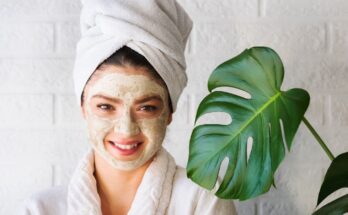Are you looking for a natural solution to get a healthy glow? Try incorporating tulsi into your routine for skin rejuvenation and acne treatment.
Do you want to revamp your beauty routine and switch to natural using plant-based goods? Including tulsi in your skincare routine can be effective in making your skin look soft and smooth. tulsi, often known as holy basil, is a culinary staple. However, it may provide numerous health benefits to the skin. This aromatic herb, with its little leaves and potent substances, has been silently working its magic in Ayurveda and Naturopathy for centuries. Packed with antioxidants and anti-inflammatory properties, tulsi for skin can be a game-changer in your beauty regime. From combating acne-causing bacteria to soothing irritated skin, tulsi offers a natural and effective solution to various skin concerns. Know the benefits of tulsi for skin and how to use it.
Benefits of tulsi for skin
Tulsi, with its potent blend of compounds, offers a multitude of benefits for your skin. Here’s how.
1. Keeps acne at bay
Suffering from acne daily, including tulsi in your beauty routine may be helpful. Its antibacterial properties combat the bacteria that contribute to acne breakouts, as found in a study published in the journal Frontiers. The anti-inflammatory nature of tulsi may help to soothe irritated skin and reduce redness associated with acne. This herb also works to cleanse pores, removing dirt and oil that can clog them and lead to pimples. By reducing inflammation, it helps to minimise the swelling and discomfort of existing acne. Using tulsi for skin regularly can help prevent future breakouts and offers a natural approach to clearer, healthier-looking skin.

2. Gives you glowing skin
Using tulsi for skin is a great way to promote glowing and clear appearance. It’s a natural source of Vitamin C and promotes skin brightening for a radiant complexion. “This Vitamin C content in tulsi helps reduce the appearance of dark spots, often caused by sun exposure or hormonal changes,” says Ayurveda expert Dr Chanchal Sharma. Hyperpigmentation and uneven skin tone can be visibly diminished with regular use of tulsi. Tulsi’s skin-brightening properties contribute to a more even skin tone overall. Regular application of tulsi can help reveal naturally luminous and glowing skin. The antioxidants present in tulsi further support its brightening effects by protecting against damage. Embrace the natural brightening power of tulsi for skin that appears more youthful and vibrant.
3. High in anti-ageing properties
Tulsi’s significant antioxidant capacities make it an important ally in fighting against ageing. These antioxidants combat free radical damage, a primary cause of accelerated skin ageing, as found in a study published in the Journal of Ayurveda and Integrative Medicine. Free radicals may speed up the ageing process, resulting in the appearance of wrinkles and fine lines. Tulsi protects the skin from this damage, which slows the appearance of ageing. Tulsi can help reduce fine lines and wrinkles. This results in a more youthful complexion, with skin that appears softer and more radiant.
4. May soothe skin irritation
Tulsi for skin offers a natural way to soothe irritation and redness due to its powerful anti-inflammatory properties. “Redness and inflammation, common symptoms of skin irritation, are effectively reduced by tulsi. This soothing effect makes tulsi beneficial for those with sensitive skin prone to irritation,” says the expert. Tulsi can provide comfort and relief for skin conditions like eczema and psoriasis, which are often characterised by inflammation and itching. The anti-inflammatory action of tulsi helps calm the skin and reduce discomfort. Regular application of tulsi can contribute to healthier-looking skin, less prone to flare-ups.
How to use tulsi for skin?
Here are 5 DIY options made from tulsi for skin:
1. Tulsi and honey face mask
This mask is great for acne-prone skin. Combine 1 tablespoon of tulsi powder with 1 tablespoon of honey and apply to your face for 15-20 minutes. Honey is a natural humectant that helps to moisturize the skin, while tulsi’s antibacterial properties help to fight acne-causing bacteria.
2. Tulsi and yoghurt face mask
This mask is perfect for oily skin. Mix 1 tablespoon of tulsi powder with 1 tablespoon of yoghurt and apply to your face for 15-20 minutes. Yogurt helps to exfoliate the skin and remove excess oil, while tulsi helps to cleanse pores and prevent acne breakouts.
3. Tulsi and lemon face mask
This mask is ideal for brightening the skin and reducing dark spots. Combine 1 tablespoon of tulsi powder with 1 tablespoon of lemon juice and apply to your face for 10-15 minutes. Lemon juice is a natural bleaching agent that helps to lighten dark spots, while tulsi helps to protect the skin from environmental damage.

4. Tulsi and aloe vera gel
This mask is perfect for soothing irritated skin. Mix 1 tablespoon of tulsi powder with 1 tablespoon of aloe vera gel and apply to your face for 15-20 minutes. Aloe vera gel is a natural anti-inflammatory that helps to soothe irritated skin, while tulsi helps to reduce redness and inflammation.
5. Tulsi toner
This toner is great for all skin types. Boil a cup of water and add a handful of tulsi leaves. Let the water cool and then strain the leaves. Use the tulsi-infused water as a toner after cleansing your face. This toner helps to cleanse pores, reduce inflammation, and brighten the skin.
Side effects of using tulsi for skin
It is important to be aware of the potential side effects of using tulsi for skin:
- In some cases, tulsi can cause skin irritation, especially in people with sensitive skin. It is always recommended to do a patch test before applying tulsi to your face.
- People who are allergic to basil or other plants in the Lamiaceae family may also be allergic to tulsi. Allergic reactions can manifest as redness, itching, swelling, or hives.
Note: If you experience any adverse effects while using tulsi for skin, discontinue use and consult with your doctor.
Related FAQs
Is it safe to use tulsi on the skin every day?
While tulsi is generally safe for topical use, it’s not recommended to use it on your skin every day. Overuse can potentially lead to skin irritation or dryness. It’s best to use tulsi-based skincare products or DIY remedies a few times a week, allowing your skin to rest in between applications.
When you can see results after applying tulsi on the skin?
Results from using tulsi on skin can vary depending on individual skin type and the specific concern being addressed. Generally, noticeable improvements in skin clarity and reduced inflammation may be seen within a few weeks of consistent use.
Source link






